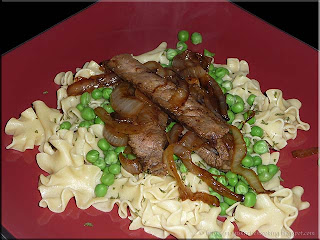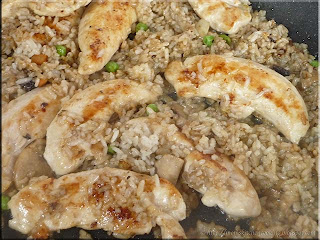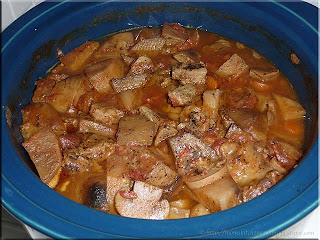Old Man Winter just refuses to release his grip on what has been a rather long, drawn out winter. We've had snow on and off since the first week of November and just had snow April 18 so we have been dealing with snow for about twenty-two weeks. If anything this long winter will go down in our culinary history as the Winter of Soups. I think I made a pot of soup for each of those weeks, sometimes twice including the four weeks we were away on our winter vacation. This year I was a bit more adventuresome in soup making, adding ingredients or using combinations I haven't tried before. The beauty of soup is as long as you have the basic stock you have the makings of soup!

I wrote earlier about a fundraiser one of our grandkid's school had with bean packets from the Bean Ladies. One of the packets I bought was a simple bean mixture to be used for soup. The next time I was at the grocery store I checked to see what kind of mixes they have. Now I know there are a number of dried soup mixes available but I didn't want anything with seasonings, just the actual dry mix. The intent was if I liked that combination I could make up a few jars ready to use when desired. I bought a soup mix by Bella Tavola that consisted of green split peas, yellow split peas, long grain rice, pearl barley, alphabet pasta and red split lentils in about equal portions. The 450 g package (about 2 cups) was 99¢.
I made a hearty beef and tomato soup using half of the package of mix, two soup bones, carrot, parsnip, onion and seasonings. The total cost from scratch came out to about $3.65 with the most expensive ingredient being the soup bones. Cooking time costs for electricity would add about 70¢ for a grand total of $4.35. The yield was 8 - 10 servings of soup so the cost per serving was 44¢ to 54¢ bring the meal when served with homemade bread well under the $1 mark. These numbers would make any frugalista jump for joy. Talk about a budget stretching meal!
I apologize for the quality of the picture. This soup has a little olive oil in it that makes it very difficult to take a good picture. Olive oil not only helps to caramelize the soup bones adding colour and flavour but makes the lycopene in the tomatoes more accessible so this is a healthier soup. The soup was an absolute winner hands down! I made it from scratch using soup bones but you could start with pre-made stock to shorten the prep time. There is a lot of room to tweek as desired as well. I think it would be excellent substituting wild rice for the long grain rice for added flavour. The only complaint I had with this particular mixture is the pasta cooked considerably faster than the other ingredients so I wasn't pleased with the softer pasta texture. When using a homemade mix I will omit the pasta then add it to the soup in about the last 10 minutes of cooking.
Hearty Bean and Tomato Soup
2 tbsp olive oil
2 lg soup bones
1 onion, unpeeled and quartered
1 carrot, unpeeled
1 parsnip, unpeeled
5 peppercorns
1 lg bayleaf
water
Heat oil in bottom of pressure cooker with lid off. Brown the soup bones. Add remaining ingredients. Fill with water to the ⅔ mark. Place lid and regulator on the pressure cooker. Bring to pressure and cook 40 minutes. Remove from heat. Allow to depressurize. Strain the stock returning stock to pot. Cut any meat from the bones adding to stock.
Add:
1 L (4 c) chopped tomatoes
500 ml (2 c) beef stock
1 c Bella Tavola soup mix
1 tbsp Worcestershire sauce
1 tsp onion powder
salt to taste
Bring to a boil. Reduce heat to a low simmer and continue cooking until barley and lentils are tender. Serve with dinner rolls, crackers or homemade bread.
Bon Appétit!
Garden Gnome
©2006-2011


























